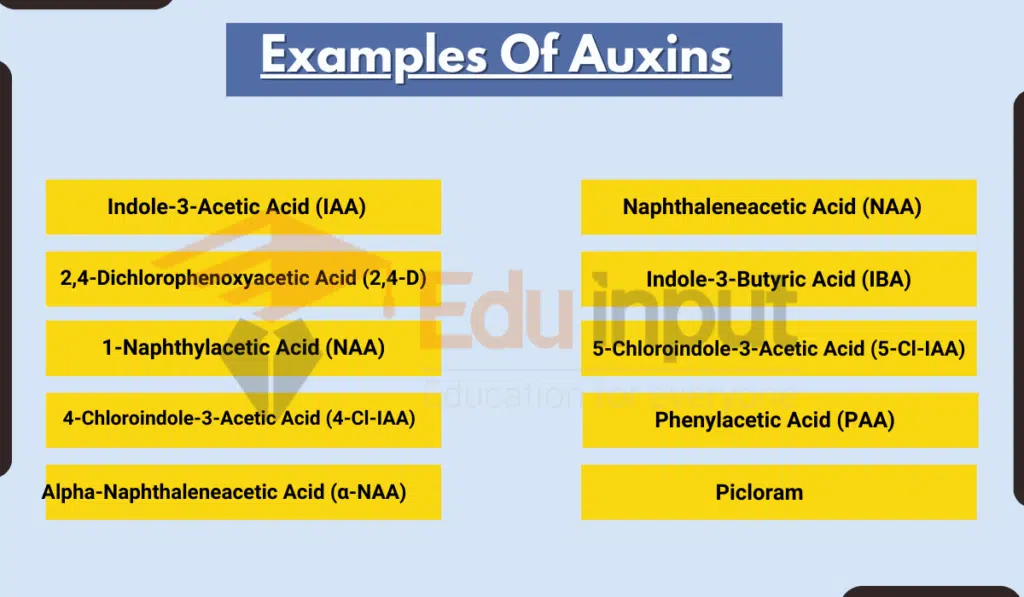10 Examples Of Auxins
Auxins are plant hormones that play important role in plant growth and development.
Indole-3-Acetic Acid (IAA), Naphthaleneacetic Acid (NAA), 2,4-Dichlorophenoxyacetic Acid (2,4-D), Indole-3-Butyric Acid (IBA), 1-Naphthylacetic Acid (NAA), 5-Chloroindole-3-Acetic Acid (5-Cl-IAA), and 4-Chloroindole-3-Acetic Acid (4-Cl-IAA) are some important examples of auxins.

Examples Of Auxins
Here are the examples of auxins:
1. Indole-3-Acetic Acid (IAA)
IAA is the most well-known and naturally occurring auxin in plants, playing a crucial role in various growth processes.
2. Naphthaleneacetic Acid (NAA)
NAA is a synthetic auxin commonly used in plant research and horticulture for root development and fruit thinning.
3. 2,4-Dichlorophenoxyacetic Acid (2,4-D)
2,4-D is a synthetic auxin used as a herbicide to control broadleaf weeds in agriculture.
4. Indole-3-Butyric Acid (IBA)
IBA is often used in rooting hormone formulations to promote root development in plant cuttings.
5. 1-Naphthylacetic Acid (NAA)
NAA is another synthetic auxin used in plant research and tissue culture to stimulate root formation.
6. 5-Chloroindole-3-Acetic Acid (5-Cl-IAA)
This synthetic auxin has been studied for its effects on plant growth and development.
7. 4-Chloroindole-3-Acetic Acid (4-Cl-IAA)
Like 5-Cl-IAA, this synthetic auxin is used in research to understand auxin functions.
8. Phenylacetic Acid (PAA)
PAA is a natural auxin found in some plants, and it can influence root development.
9. Alpha-Naphthaleneacetic Acid (α-NAA)
α-NAA is a synthetic auxin used in agriculture to thin fruit clusters and promote fruit growth.
10. Picloram
Picloram is a synthetic auxin used as a herbicide to control woody plants and invasive weeds.



Leave a Reply